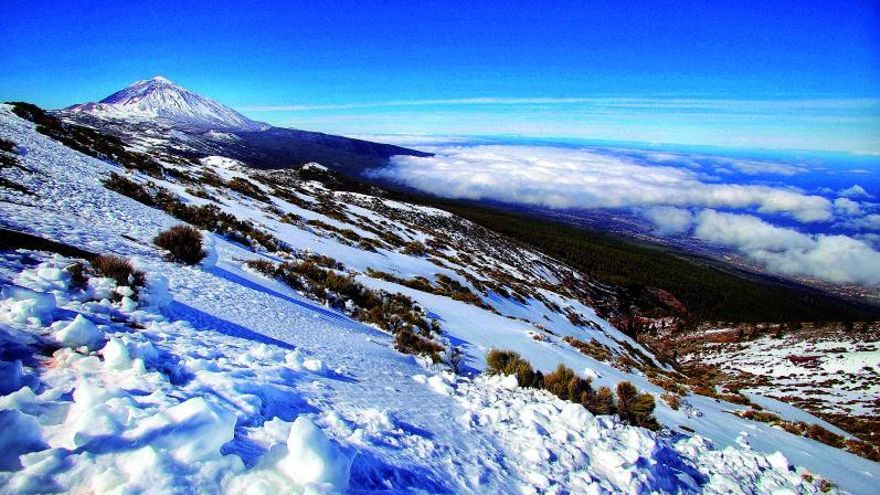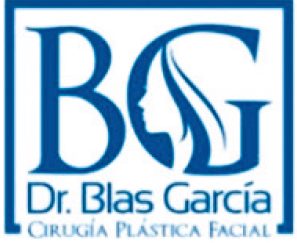
snowfall in the Teide they leave microplastics throughout the National Park that can reach the groundwater or be irrigated by the Island as a result of runoff, with its consequent damage to the soil and water resources. It is the main conclusion of an investigation of the University of La Laguna (ULL) that has just confirmed for the first time the presence of these polluting particles in the most visited national park in Europe, with more than three million people a year.
The study, just published by the international scientific journal Science of The Total Environment, suggests that these microplastics found in snow come from different regions of the world – they could even travel thousands of kilometers, transported in the atmosphere by the wind– or the human activity of the visitors who come to Mount Teide, whose highest point is at an altitude of 3,715 meters according to the latest measurement. The analyzes found 1,784 particles in 63 snow samples collected by the researchers.
Entitled Microplastics in the snow of a high mountain national park: El Teide, Tenerife (Islands Canary Islands, Spain), the article specifies that microplastics have been discovered thanks to the collection of samples in the National Park during three periods of the year 2021: during the Philomena storm, which occurred between January 7 and 8, with samples in areas of lots of human activity; in another storm that took place on February 4 in areas far from human activity and in a third survey carried out on February 12 in the highest parts of the volcano. Those obtained in the second survey were especially conclusive.
A total of 63 samples
Researchers from the ULL departments of Chemistry, Medicine and Biology, as well as from the Institute of Tropical Diseases and Public Health of the Canary Islands, led by Javier Hernández Borges, professor of Analytical Chemistry at the lagoon center, collected the 63 samples in areas accessible to the population, in virgin areas and in areas that are only within reach of people who carry out high mountain activities in the Teide National Park. 62.7% are particles with a predominance of cellulose, both natural –cotton and linen– and semi-synthetic; 20.9% come from synthetic polyester fibers, 6.3% are from acrylic synthetic fibers and 1.1% from nylon, also synthetic.
Microfibers of natural origin from cellulose do not pose an environmental problem since they degrade easily in the environment, but not semi-synthetic and synthetic fibers, which are considered microplastics, since they are artificial and take much longer to degrade.
Scientific studies carried out to date have shown that microplastics are present throughout the natural environment and even in biota (group of living organisms) and can be transported over long distances. Many of these works suggest that the presence of these polluting materials in the soil may be much higher than that found in the oceans, although there are still few publications in this regard. In the case of humans, recent studies show the existence of microplastics in faeces, urine, blood and even the placenta, which shows that microplastics have entered the food chain and can have consequences on health.
These investigations have focused on marine and terrestrial environments. The novelty introduced by this study from the University of La Laguna is that it has been carried out in a high mountain space and based on snow samples. It is, in fact, the first of its kind to be held in Spain. There are few similar studies carried out based on the collection of snow and ice. Existing ones were made in the Italian Alps, northern Iran, Everest (the world’s highest peak at 8,848 meters), Antarctica, the glaciers of the Tibetan plateau, and the Ecuadorian Andes.
Another of the conclusions is that the samples collected in pristine areas of Teide, in comparison with those of the mentioned cases, yield “slightly higher” concentrations of microplastics than those described in Antarctica, Iran and Everest, and lower than those found in the Italian Alps or the Ecuadorian Andes. According to ULL professor Javier Hernández Borges, the team has been struck by the similarities in the profiles found between Mount Teide and Mount Everest.
come from tissues
Most of the polluting elements found in the Teide snow “could be released from the tissues.” The ULL team qualifies that the analyzes show “significant amounts” of this residue, among which blue and black microfibers predominate. “From the results of this study, it could be inferred that the Teide National Park acts as a receptor for microplastics, both from local and long-distance sources,” the researchers detail, adding: “In addition to the wet deposition of microplastics from the atmosphere , human activities in the open air in the snow (trekking, sledding, etc.) seem to be introducing significant amounts of particles to Teide, coinciding with previous results reported in other regions of the world. However, further studies need to be developed to further confirm this issue.”
“Once the snow melts, microplastics could move into the soil and potentially reach groundwater or other parts of the territory with runoff, with consequent physicochemical and biological effects on soil and water resources,” the experts add in the conclusions.
new research
The article published in Science of The Total Environment advocates carrying out new research to delve into this type of contamination that has just been discovered on Teide. “Future research must be carried out to expand knowledge about microplastic contamination in the Teide National Park, which is a World Heritage Site, with high biodiversity and, therefore, important biological implications,” he points out, concluding that said Future studies may involve other experts who “help identify the degree of contamination in these areas and take new actions to improve conservation” of the Teide National Park.
The article is signed by six ULL researchers: Javier Hernández Borges, Cristina Villanova Solano and Javier gonzalez salamus, from the Department of Chemistry, Departmental Unit of Analytical Chemistry, of the Faculty of Sciences; Cintia Hernández Sánchez, from the Institute of Tropical Diseases and Public Health of the Canary Islands; Francisco javier diaz Peña, from the Department of Animal Biology, Edaphology and Geology; and Miguel González Pleiter, from the Department of Biology.
A big global problem
One of the biggest threats to the environment is pollution from plastic materials, the consumption and subsequent abandonment of which is a major global problem. Within this plastic waste, the so-called microplastics (less than 5 millimeters) are becoming more important, which are used in different industrial processes, can be generated from the fragmentation of larger plastics or macroplastics and whose danger is related to its ability to integrate into the trophic chain, with a high potential to damage biota. This explains one of the researchers who has just confirmed the existence of microplastics on Teide for the first time, Cintia Hernández Sánchez, in her final degree project.
The concern is such that this study on Teide is not the first to be carried out in the Canary Islands on these polluting microfibers. What’s more, the same team that signed the article in Science of The Total Environment is currently developing another on the presence of microplastics in the soil of the Teide National Park and in rabbit droppings that inhabit this space. The coordinator, Javier Hernández Borges, anticipates that they have found concentrations that are very important to take into account.
Another of the projects is called DeepPlas. It is funded by the Canary Islands Research Agency and is carried out by a collaborative group of researchers from the Archipelago –called OpenPlas– made up of scientists from the University of Las Palmas de Gran Canaria, the University of La Laguna and the Spanish Institute of Oceanography (IEO). This also recent research, whose first results were released at the beginning of this month, ensures that a large part of the microplastics found on the seabed of the Canary Islands come from the Mediterranean. The smallest are unable to fight against the force of the prevailing currents that connect the Mediterranean with the Atlantic, and, once there, they remain “captive” in them, moving through the ocean and polluting the water column of all those places that find in your path.
Other canary projects
The conclusions of this project coincide with the presentation of the results of another, called Implamac, which also leads the group of Applied Analytical Chemistry at the University of La Laguna led by the scientist Javier Hernández Borges. It seeks to assess the impact of these pollutants throughout Macaronesia: the Canary Islands, Cape Verde, Azores and Madeira. Among the most relevant results, the identification and confirmation of hot spots of massive arrival of microplastics to the Islands stands out, such as Playa Grande in Tenerife or Arenas Blancas in El Hierro. Or the verification that Madeira has the lowest concentrations of microplastics of the Macaronesian archipelagos.
















